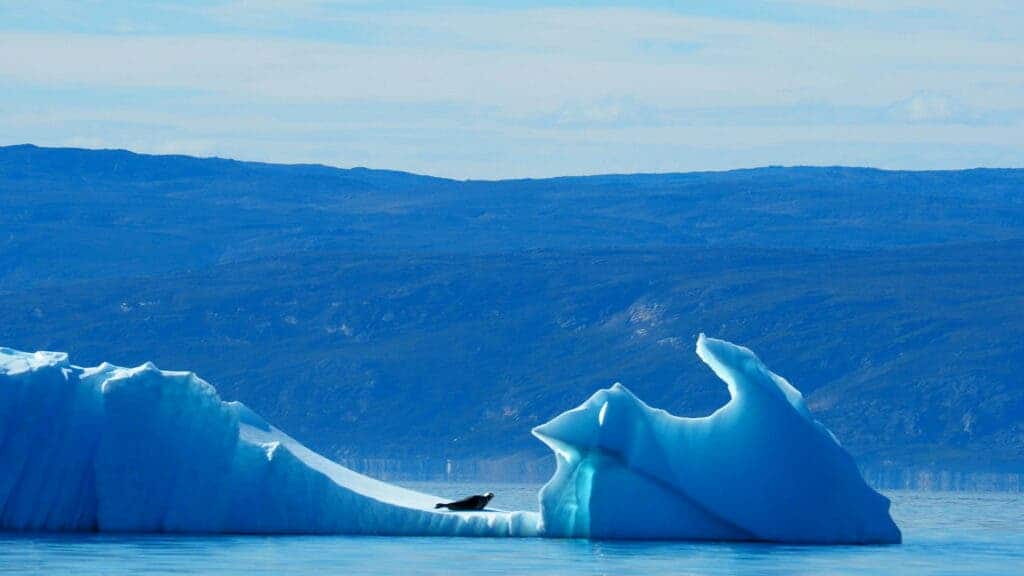Warmer, less frozen, and biologically changed — that’s the new face of the Arctic, with record conditions registered across the region in 2020, according to a new report. Climate change is causing big disruptions, with second-highest air temperatures and second-lowest summer sea ice driving a wide array of impacts.

The National Ocean and Atmospheric Administration (NOAA) issued its annual Arctic report card, which compiles observations and analyses of the region. More than 130 scientists from 15 countries were part of this joint effort to inform decision-makers about the fast changes happening in the Arctic’s climate and ecosystems.
In a summary video published with the report, NOAA said there have been “alarming rates of change observed” since the 2006 Arctic Report Card, and adds, “the rate of change has been extraordinary.” This is evidenced, for example, by the intense heat and wildfires registered across Siberia this summer.
The findings showed that 2020 was the second-warmest year in the Arctic since record-keeping began in 1900 — but this is actually part of a longer trend, as nine of the past ten years had air temperatures of at least 1ºC above the 1981-2010 average. Simply put, natural causes are not to blame here, it’s man-made climat heating.
There were specific places that were unusually hot this year. Parts of Siberia were 5ºC above the long-term average in the first half of the year. The town of Verkhoyansk in Siberia reached 38ºC in June, which is the hottest temperature ever registered north of the Arctic Circle, according to NOAA’s report.
The world had already warmed over 1ºC since the beginning of the industrial revolution. But not every part of it has been subject to the same temperature increase. The pace of warming in the Arctic is estimated to be two to three times the global average, making it one of the most at-risk areas in the world.
“It has been yet another year of breathtaking changes in the Arctic,” Jennifer Francis, the senior scientist at the Woodwell Climate Research Center, told The Guardian. “Temperatures in Siberia have been off the charts most of the year, and the Arctic passages have been open for shipping much longer than any previous year.”
Meanwhile, the Arctic minimum sea ice extent reached at the end of the summer was the second-lowest in the 42-year satellite record. The overall thickness of the sea ice cover is also decreasing as Arctic ice has transformed from an older, thicker, and stronger ice mass to a younger, thinner more fragile ice mass in the past decade.
The Arctic’s climate remains stable thanks to its large expanses of sea-ice, which regulate the air and ocean temperatures. But as global warming has expanded, ice cover has diminished fast, exposing more of the land and ocean to the sun. This causes a dramatic change, allowing currents to penetrate deeper into the Arctic.
This has been a tumultuous year for the Arctic’s glaciers. The melting permafrost led to a disastrous oil spill in Russia following the collapse of a fuel tank, leaking 20,000 tons of diesel. At the same time, Canada’s last fully intact Arctic ice shelf collapsed after losing more than 40% of its area in just two days at the end of July.
The report also warned that sea surface temperatures this summer were 1 to 3ºC above normal in the Arctic. This is mainly why sea-ice took so long to grow back. The warmer water has had positive biological impacts, NOAA said, as ocean primary productivity was between 2 to 6 times higher than normal in the Laptev Sea.
“If we do not bring emission rates down, Arctic climate will change so significantly that this year’s record low sea ice extents will look large and record warm temperatures will appear cool compared to what we will experience in the future,” Laura Landrum, the associate scientist at the US National Center for Atmospheric Research Climate and Global Dynamics Laboratory, told The Guardian.






